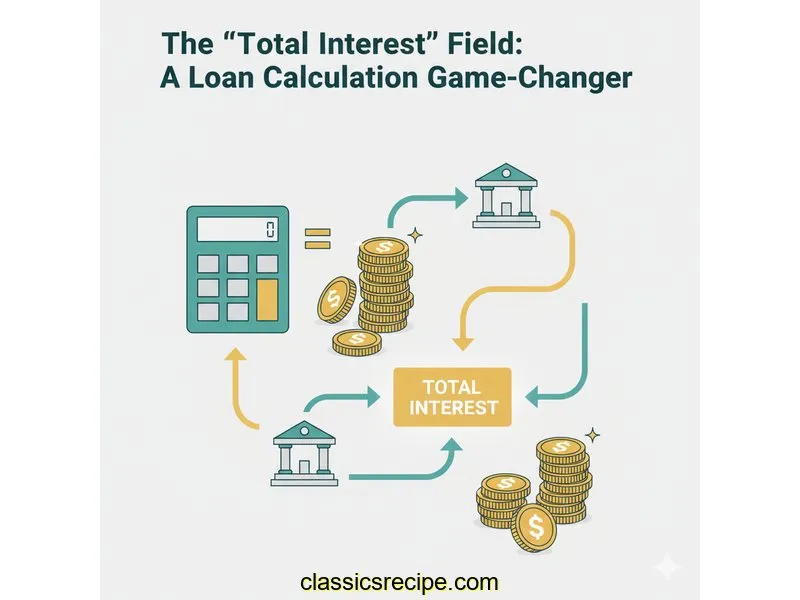
Auto Loan Calculator
Calculate payments over the life of your Loan
Home Blog Privacy Terms About Contact
Calculate payments over the life of your Loan
Home Blog Privacy Terms About ContactPublished on October 14, 2025

My whole journey into understanding loan math started with a simple, confusing conversation. I was chatting with my cousin, and he mentioned offhand that a lower monthly payment could actually end up costing a lot more money. I remember tilting my head, completely baffled. How could that be? In my mind, lower always meant better, cheaper, more affordable.
This idea just wouldn't leave me alone. How can paying less each month result in paying more overall? It felt like a riddle. This wasn't about trying to find the "best" loan or making a financial decision; it was pure curiosity about the mechanics. I needed to see the math for myself to believe it. My goal became simple: to understand the relationship between the length of a loan, the monthly payment, and the total amount of interest paid.
I turned to the most obvious tool: an online loan calculator. I plugged in some hypothetical numbers, but my initial attempts only deepened my confusion. I was so focused on that one big, bold number—the monthly payment—that I completely overlooked everything else. I'd change the loan term from 4 years to 5 years, see the payment go down, and think, "See? Cheaper." But my cousin's words echoed in my head, telling me I was missing a crucial piece of the puzzle.
This is my story of figuring out that puzzle. It's about looking past the obvious numbers and learning how different parts of a loan calculation interact. Just a heads-up: this is about understanding how calculations work, not financial advice. It’s the story of my "aha!" moment with a simple calculator field I had been ignoring.

My frustration peaked when I decided to run a specific test. I wanted to compare two scenarios for the exact same loan amount and interest rate, only changing the loan term. I decided to use a hypothetical loan amount of $13,850 at an interest rate of 7.2%. My goal was to see the difference between a 4-year term and a 5-year term.
First, I entered the 4-year term, which is 48 months. The calculator produced a monthly payment of around $336.56. Okay, that was my baseline. My brain logged that number.
Next, I kept everything else the same—$13,850 loan, 7.2% rate—but I changed the term to 5 years, or 60 months. The calculator spit out a new monthly payment: $276.01. My immediate, gut reaction was one of validation. "Aha! The payment is over $60 lower. The 5-year loan is obviously more affordable," I thought. I was laser-focused on that monthly cash flow number because it felt the most real and immediate.
But the contradiction was still there. If it was so much more affordable per month, how could it possibly cost more in total? I looked at the screen, staring at the two monthly payment figures. I even multiplied them out in my head, and the math just wasn't clicking. My mistake was fundamental: I was equating "lower monthly payment" with "lower total cost." I was completely ignoring the time factor.
This is where I got stuck. I was comparing apples and oranges without realizing it. I was comparing a 48-payment sequence to a 60-payment sequence based only on the size of a single payment. The calculator was showing me all the information I needed, but I was only reading the headline and skipping the full story. I knew I had to dig deeper and look at the other output fields—the ones I had previously dismissed as less important.
My breakthrough moment didn't come from a complex formula but from a simple change in perspective. I decided to ignore the monthly payment field for a moment and focus on two other outputs the calculator provided: "Total Principal Paid" and "Total Interest Paid." I decided to create my own simple comparison table to lay the numbers out side-by-side, forcing myself to see the whole picture.
This simple act of organizing the information was like turning on a light in a dark room. Suddenly, the relationship between all the numbers became crystal clear. The "Total Interest Paid" was the number that told the real story of the loan's cost.
The core lesson was seeing how time directly impacts the cost of a loan. Interest is calculated on the remaining balance. With a longer-term loan, the principal balance goes down more slowly. This means that for a longer period, you are paying interest on a larger outstanding amount.
Those extra 12 months in the 60-month scenario weren't "free." They were 12 additional opportunities for the 7.2% annual interest to be calculated on the money I still owed. This is why the total interest was higher, even though the rate was identical.
To really solidify this, I clicked the "Show Amortization Schedule" button on the calculator. This was another game-changer. For the 48-month loan, I could see how much of my $336.56 payment went to interest vs. principal each month. In the first month, about $83.10 was interest. By the last month, only about $2.00 was interest.
When I looked at the 60-month schedule, the same pattern was there, but it was stretched out. Because the payments were smaller, less principal was being paid off each month, especially in the beginning. This slower reduction in principal meant more interest was paid over the life of the loan. Seeing the two schedules side-by-side made the abstract concept of "amortization" tangible and easy to understand.
I was excited by this discovery and wanted to be sure it wasn't a fluke. I ran another set of numbers: a hypothetical loan of $19,200 at 6.5% interest. I compared a 36-month term to a 72-month term. The results were even more dramatic. The monthly payment for the 72-month loan was significantly lower, but the total interest paid was nearly double that of the 36-month loan. My cousin was right, and now I finally understood the math behind why.
Going through this process taught me so much about how to properly use loan calculators and interpret the results. It was less about finance and more about improving my own numerical literacy. Here are the biggest calculation-focused takeaways from my journey:
As I was going through this, a few questions kept popping into my head. Here are the questions and the answers I figured out along the way, which might help clarify things for anyone else on a similar learning path.
The calculation for a monthly payment essentially takes the total amount you need to repay (principal plus all future interest) and divides it over the number of months in your term. When you increase the number of months, you're spreading that total amount over a longer period, so each individual payment slice becomes smaller. It's like cutting a pizza into 12 slices instead of 8—each slice is smaller, but the total amount of pizza is the same.
Most good online calculators will show you this directly in a field called "Total Interest Paid." But if it doesn't, the math is straightforward. First, calculate your total payments by multiplying your monthly payment by the number of months in your loan term. Then, subtract the original loan amount (the principal) from that total. The result is the total interest you'll pay. For example: ($276.01 x 60 months) - $13,850 = $2,710.60.
From my learning journey, the two most important fields for understanding the true cost are "Total Interest Paid" and "Total of Payments." The "Total Interest Paid" shows you exactly how much the service of borrowing the money is costing you. The "Total of Payments" shows you the full amount of money that will leave your bank account over the life of the loan.
This is a great question that mixes calculation with real-world factors. For calculation purposes, you can input any rate with any term to see how they interact. In my examples, I kept the rate the same to isolate the effect of the term. In the real world, lenders might offer different rates for different terms, but that's a separate variable. When using a calculator for learning, it's helpful to change only one variable at a time (like the term) to clearly see its impact.
My biggest takeaway from this entire exercise was a simple one: the most appealing number isn't always the most important one. I was drawn to the lower monthly payment because it felt like a win, but the math showed it was just one part of a much bigger equation. Learning to look for the "Total Interest Paid" field completely changed how I interact with loan calculators.
It transformed them from a simple "what's my payment?" tool into a powerful educational device for understanding the mechanics of borrowing. It proved to me that anyone, with a bit of curiosity and a willingness to look at all the numbers, can understand how this math works. It’s not about being a financial genius; it’s about knowing where to look and what questions to ask.
I hope sharing my personal "aha!" moment is helpful. Taking the time to play with the numbers and see how they connect has made me feel much more confident in my ability to understand financial concepts. This article is about understanding calculations and using tools. For financial decisions, always consult a qualified financial professional.
Disclaimer: This article documents my personal journey learning about loan calculations and how to use financial calculators. This is educational content about understanding math and using tools—not financial advice. Actual loan terms, rates, and costs vary based on individual circumstances, creditworthiness, and lender policies. Calculator results are estimates for educational purposes. Always verify calculations with your lender and consult a qualified financial advisor before making any financial decisions.
